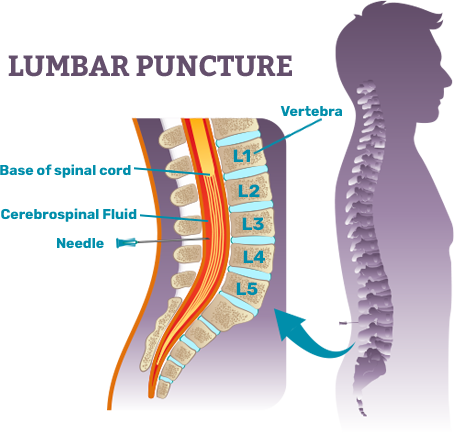FIGHTING LBD REQUIRES RESEARCH ENABLED BY LUMBAR PUNCTURES
WHAT IS A LUMBAR PUNCTURE?
Commonly known as a spinal tap, a lumbar puncture (LP) is a short, minimally invasive medical procedure. During an LP, a small amount of cerebrospinal fluid (CSF) is taken from a patient’s lower back. CSF is a clear fluid surrounding the brain and spinal cord that can reveal changes in the brain caused by diseases like LBD.
Watch Video
HOW DOES A LUMBAR PUNCTURE HELP ADVANCE LBD RESEARCH?
An LP provides a safe and effective way to collect a cerebrospinal fluid (CSF) sample. By studying CSF samples, researchers hope to answer important questions about LBD, including how to diagnose it earlier and more accurately.
Studying CSF samples may also help us better understand the development of the disease and measure the effectiveness of experimental treatments. Ongoing LBD research studies, like those conducted at many LBDA Research Centers of Excellence (RCOE), analyze CSF samples and store them for future studies. Such research is critical for finding new LBD treatments, which is one of the ultimate goals of the LBDA RCOE program.
IS A LUMBAR PUNCTURE SAFE?
Lumbar punctures have been used safely for more than 100 years. An LP is very low-risk, outpatient procedure performed by highly trained specialists. While LP is not currently used for routine diagnosis of LBD, it has become an extremely valuable tool in LBD research.
An LP causes minimal side effects because the needle is carefully and gently inserted in the lower spine where there is no spinal cord. As with any procedure involving a needle, an LP can cause infection or bleeding, but the risk is extremely rare for both. Fewer than 10% of people who have a lumbar puncture will experience a headache.
There is no evidence that an LP increases confusion for people with LBD. In fact, people with LBD do not face any unique risks from having an LP.
